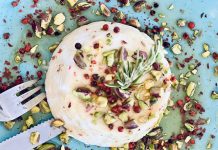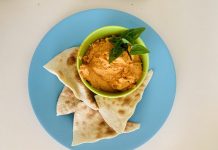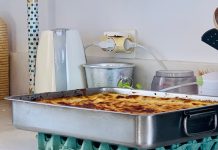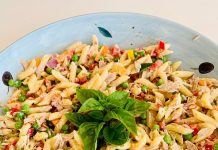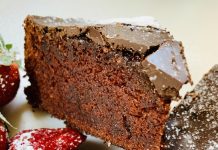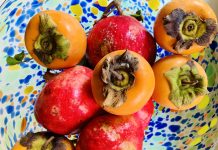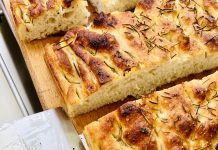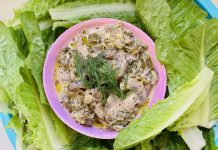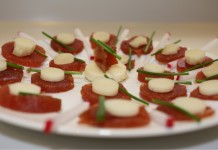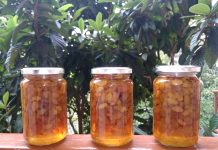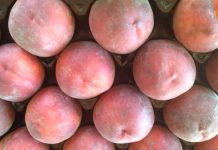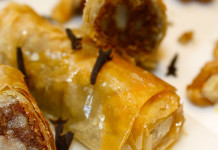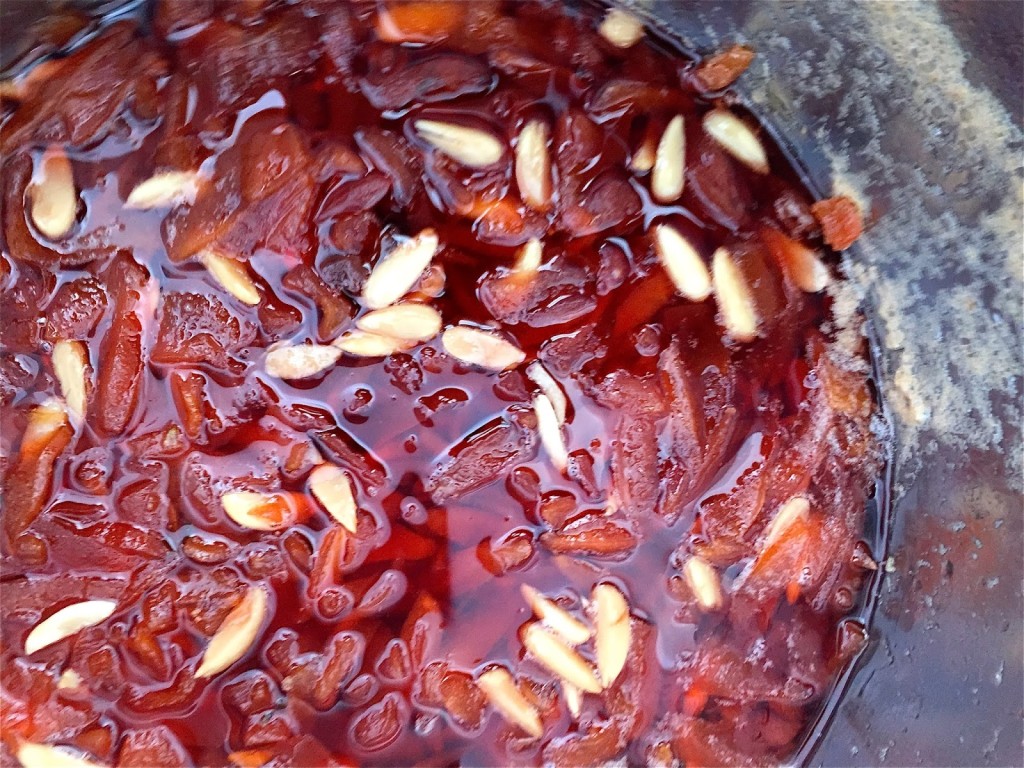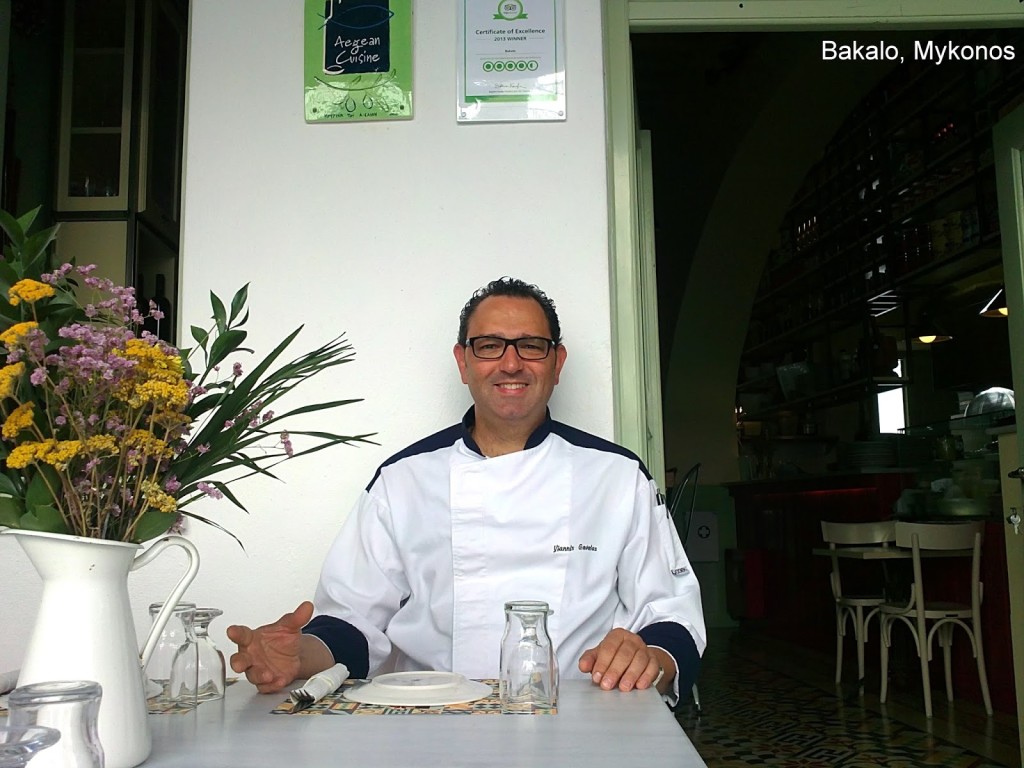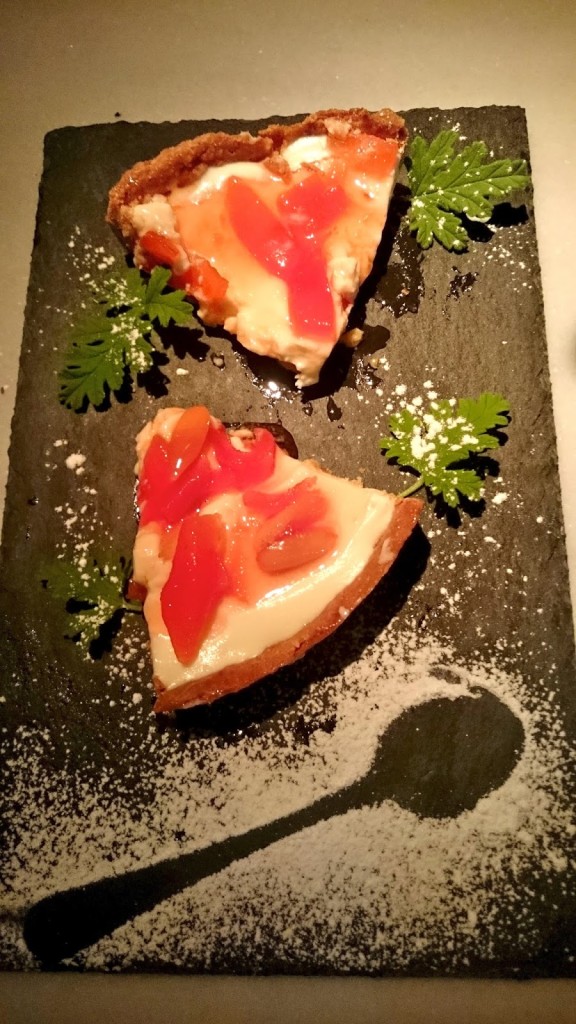 Chef Yiannis Gavalas comes from the Cycladic pretty island of Iraklia. During the summer, he lives and works on the island of Mykonos at Bacalo restaurant.
Chef Yiannis Gavalas comes from the Cycladic pretty island of Iraklia. During the summer, he lives and works on the island of Mykonos at Bacalo restaurant.
He’s one of those chefs who quickly realised that an island restaurant is an integral and indispensable part of the food chain of the place.
This is how it’s always been but in recent years, the local restaurant scene (especially in cosmopolitan islands like Mykonos where guests ask for everything from sushi to seviche!) has changed and many chefs have transformed their menus to satisfy the globalized tastes forgetting local recipes.
Therefore, it is not rare you will find gluten-free or unrefined wheat pasta being offered, or French and Japanese delicacies on the same menu.
The result? A very important link , that of the local food chain, almost disappeared (in menus as well as in real life ) : the small local farming industries closed down, the traditional dairy farms could not find any more fresh milk for their cheese, typical bakeries with rustic bread and vineyards with lesser-known grape varieties lost to fancier preferences.
With them many seasonal recipes disappeared too and so did the slow-style cooked food based on seasonal ingredients found locally.
Thank goodness fashion changes fast in societies and in food too , with foraging and locally sourced products, being the new holly grail of gastronomy! Consequently, with it there is a natural rebirth of traditional recipes with secrets and techniques that have been passed down from mouth to mouth for decades now giving a new spurt to the local farming economy.
When one is actively involved in modern day Greek gastronomy , the way chef Gavalas is, there are two ways to go: you can either choose to ignore it because you don’t play in that field (and this is the easy way), or you can use it to your advantage, making the locally sourced ingredient the backbone of your menu and introducing forgotten flavors to your clientele . The second choice is naturally more bothersome, but it guarantees a great reward, plus the joy of creativity and of belonging to a place, being part of a food chain, a member of a community that tries to turn the old into something new without ‘collateral victims’.
This is the path Yannis Gavalas chose and his menu oozes from the lovely combination of old and newly invented dishes. (The side result for us food bloggers is is that in recent years it got more difficult to get a hold of him during the winter months, as he’s darting from one part of Greece to another, tasting, searching and trying out trial menus that he will serve in his restaurant in the upcoming year).
But , the last time he passed from Athens in between his trips, we managed to pin him down and ask him for the following recipe which resembles a cheesecake with its sweet doughy base, the sour cheese filling and the fruity layer on top.
Plus, the message you send to your small island community is that -as any chef who comes here to cook for the season and then leaves- respects the farmer who tended the quince for them, the confectioner who took the time to caramelize the quince, the dairy farmer who clotted the sour cheese!
This makes me feels good! You?
The sweetest quince and
fresh goat cheese tart
by Mykonos chef Yannis Gavalas
- 500 gm (17.64 oz) flour
- 300 gm (10.58 oz) butter
- 200 gm (7.05 oz) icing sugar
- 1 egg
- The rind of ½ an un-waxed orange and 1 lemon
- Vanilla extract
Mix the flour and butter together in the mixer with the special dough accessory, or alternatively, you can rub the ingredients between your hands.
Gradually add the remaining ingredients, keeping the egg till last.
Spread the dough out on a well buttered tart dish or baking tray using your fingers.
Bake at 170C (338F) for 25 minutes. If you have special ovenproof weights to ensure that the dough doesn’t rise, place them on top of the base, otherwise prick the dough all over with a fork.
Let the dough cool down before adding the sour cheese filling.
For the sour cheese filling:
- 200 gm (7.05oz) sour cheese from Iraklia, Syros, Andros or Io
- 100 gm (3.52 oz) yoghurt from cow’s milk from Mykonos
- 60 gm (2.12oz) icing sugar
- Vanilla extract
- 50 gm (1.76 oz) fresh cream
- 1-2 gelatin leaves
Heat the fresh cream with the vanilla extract and half of the icing sugar in a saucepan.
Dissolve the gelatin leaves in cold water.
Add to the cream mixture and stir.
Beat the rest of the ingredients in a mixer, and once they’re fluffy, add the cream mixture.
Let everything cool down completely in the fridge.
Assembling the dessert:
When we remove the sour cheese and cream filling from the fridge, it might be necessary to fluff it up with an egg beater, before placing it on the tart base.
Make sure the tart dough is completely cooled down.
Spread the sugared quince evenly over the dough and sour cheese filling, and place in the fridge for another hour.
Serve chilled.

